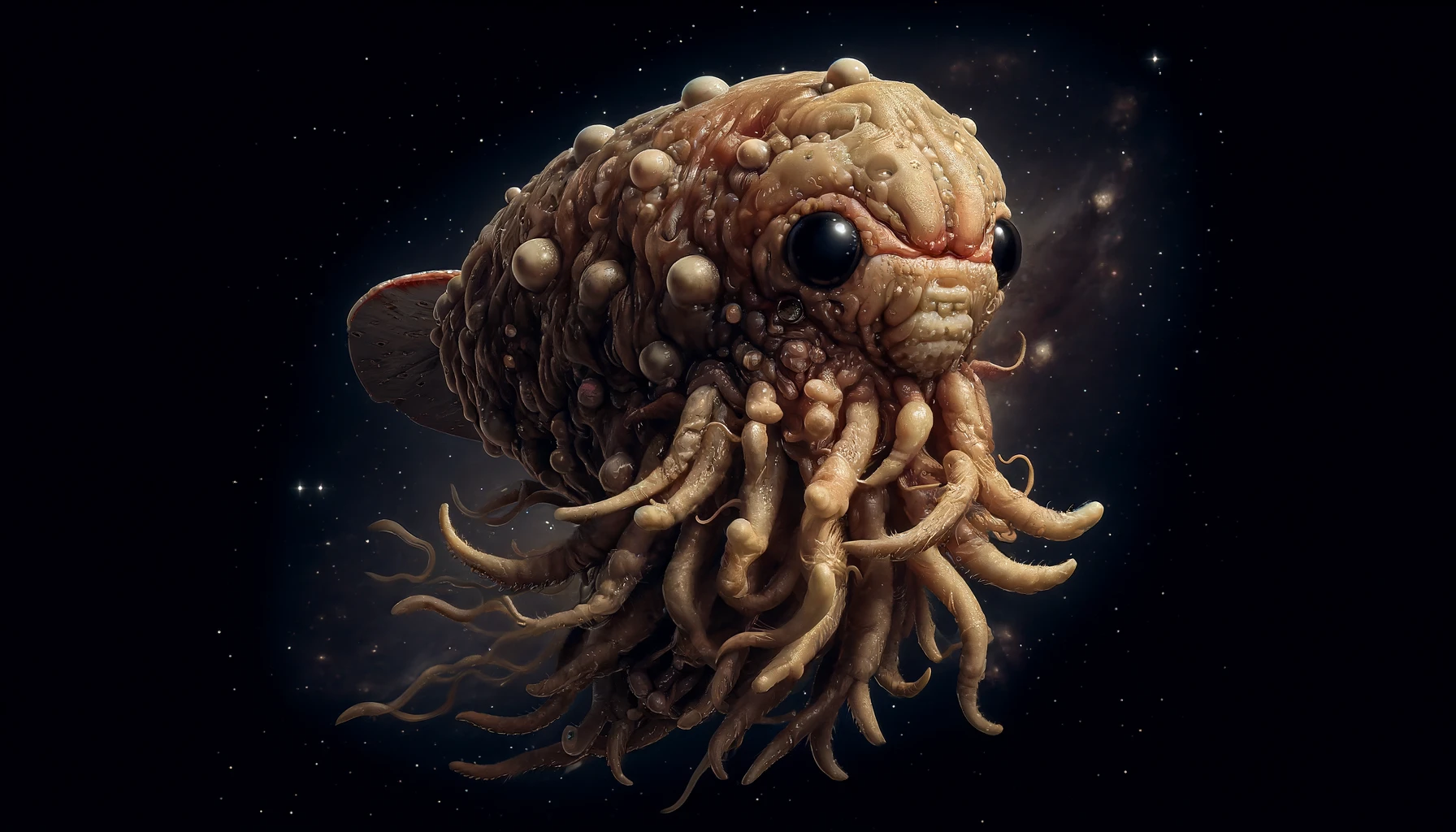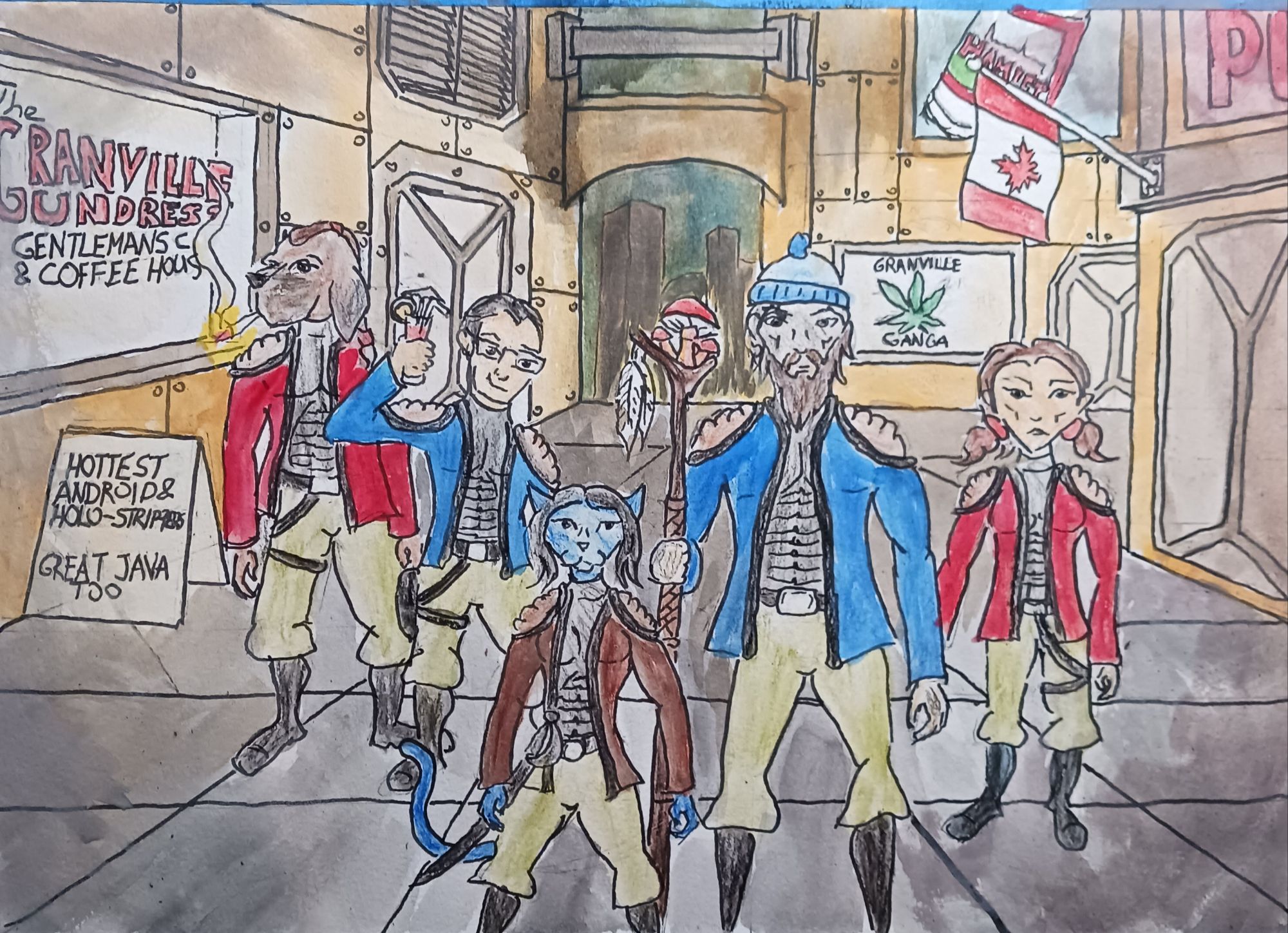Author: Dr. Jacques Tremblay
Affiliation: McGill Educational Centre Orbital Campus
—
Abstract
The Poutine Troll (Poutinalis astropoutine), colloquially known as poutine à la traîne, is a rare and enigmatic space-dwelling organism. This study presents the first comprehensive observations of the Poutine Troll in its natural habitat, focusing on its behavior, physiology, and ecological interactions. Our research aims to contribute to the understanding of this unique species and its role in the extraterrestrial ecosystem of the Terrace System System Overview The Terrace System, located in the British Columbia Sector, consists of seven planets, each with its own unique characteristics. The system's primary star, Terrace Prime, is an orange dwarf (K-type main-sequence star), providing a stable environment conducive to life on its habitable planets. Astrophysical Characteristics Terrace Prime is an orange dwarf star, estimated to be 5 billion years... More.
System Overview The Terrace System, located in the British Columbia Sector, consists of seven planets, each with its own unique characteristics. The system's primary star, Terrace Prime, is an orange dwarf (K-type main-sequence star), providing a stable environment conducive to life on its habitable planets. Astrophysical Characteristics Terrace Prime is an orange dwarf star, estimated to be 5 billion years... More.
Introduction
The Poutine Troll is a space-dwelling organism with a striking appearance and unique biological traits. First reported by deep-space explorers in the mid-23rd century, the Poutine Troll has since been the subject of numerous legends and scientific inquiries. This paper provides detailed observations gathered over five years of study conducted from the McGill Educational Centre Orbital Campus.
Methods
Observations were made using high-resolution telescopic imaging, remote sensing technology, and autonomous probes equipped with advanced sensory equipment. Data were collected over multiple expeditions to the Terrace System System Overview The Terrace System, located in the British Columbia Sector, consists of seven planets, each with its own unique characteristics. The system's primary star, Terrace Prime, is an orange dwarf (K-type main-sequence star), providing a stable environment conducive to life on its habitable planets. Astrophysical Characteristics Terrace Prime is an orange dwarf star, estimated to be 5 billion years... More, with a focus on regions near asteroid belts and derelict spacecraft where Poutine Trolls are commonly found.
System Overview The Terrace System, located in the British Columbia Sector, consists of seven planets, each with its own unique characteristics. The system's primary star, Terrace Prime, is an orange dwarf (K-type main-sequence star), providing a stable environment conducive to life on its habitable planets. Astrophysical Characteristics Terrace Prime is an orange dwarf star, estimated to be 5 billion years... More, with a focus on regions near asteroid belts and derelict spacecraft where Poutine Trolls are commonly found.
Results
Physical Description
The Poutine Troll exhibits a hard, slimy brown armor with medium-sized white protrusions, creating an appearance reminiscent of gravy and cheese curds. The head is equipped with six small black eyes, and a beak-like mouth containing serrated teeth. The number of tentacles ranges from 30 to 60, depending on the individual’s age and size. These tentacles resemble fries, contributing to the creature’s colloquial name.
Habitat and Distribution
Poutine Trolls inhabit the vast emptiness of space, often congregating near asteroid belts and abandoned spacecraft. These areas provide both sustenance and shelter. The creatures have adapted to the harsh conditions of space, displaying remarkable resilience and survival capabilities.
Behavior
Poutine Trolls are solitary and highly territorial. They emit a corrosive ink as a defense mechanism, capable of eating through spacecraft hulls. Observations indicate that they are generally non-aggressive and will only attack if provoked. Their bioluminescent capabilities are used for communication and attracting prey.
Diet
The diet of the Poutine Troll primarily consists of space debris and small organisms found within its habitat. The serrated beak and powerful tentacles allow it to capture and consume a variety of materials, including metallic and organic substances.
Reproduction
Poutine Trolls are asexual and self-fertilizing, with a reproductive cycle occurring every fifty years. Each cycle results in the birth of two offspring, which are independent from birth. The lack of a parental relationship and the long lifespan of individuals (up to 1,000 years) contribute to the species’ solitary nature.
Ecological Role
As apex scavengers, Poutine Trolls play a crucial role in maintaining the balance of their ecosystem. By consuming space debris, they contribute to the cleanliness of their habitat and prevent the accumulation of potentially hazardous materials.
Discussion
The Poutine Troll’s unique adaptations highlight the incredible diversity of life that can exist in the cosmos. Its ability to thrive in the vacuum of space and its long lifespan are of particular interest to astrobiologists and evolutionary scientists. Further research is needed to fully understand the mechanisms behind its bioluminescence and corrosive ink production.
Conclusion
This study provides a foundational understanding of the Poutine Troll’s biology and behavior. Continued observation and research will undoubtedly uncover more about this fascinating species, offering insights into the broader complexities of life beyond Earth.
References
1. Smith, A. et al. (2285). Deep-Space Explorations and Discoveries. Journal of Interstellar Biology, 45(3), 112-134.
2. Zhang, L. (2287). Bioluminescence in Extraterrestrial Species. Astrobiology Quarterly, 21(4), 87-102.
3. Kaur, R. & Patel, S. (2289). Space Ecology and Scavenger Species. Cosmic Ecology, 12(1), 56-78.
—
Appendix
– Figures and Images: High-resolution images of the Poutine Troll in various stages of its life cycle.
– Supplementary Data: Detailed charts and graphs illustrating the data collected during the study.
This scholarly paper aims to provide a comprehensive overview of the Poutine Troll, contributing valuable knowledge to the field of astrobiology and the study of extraterrestrial life forms.




